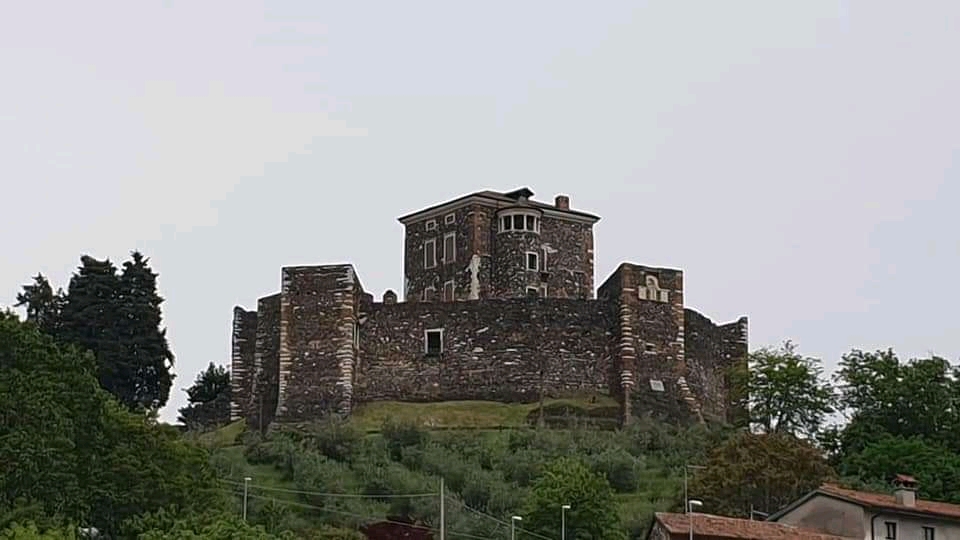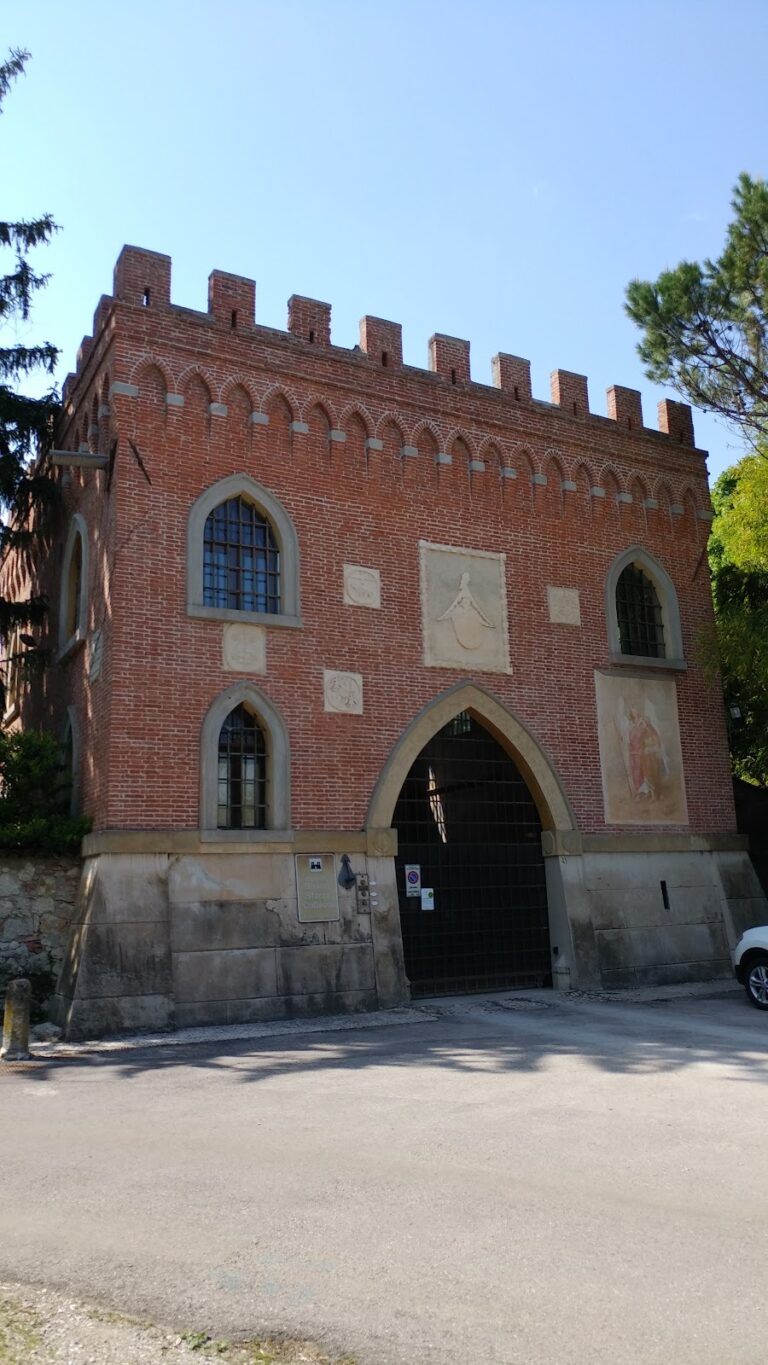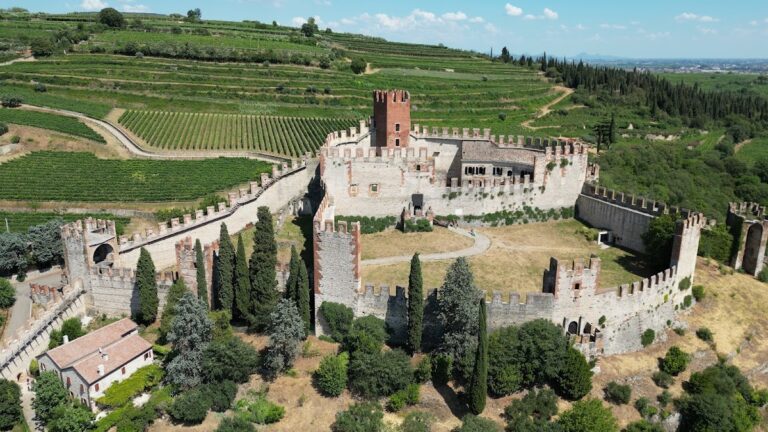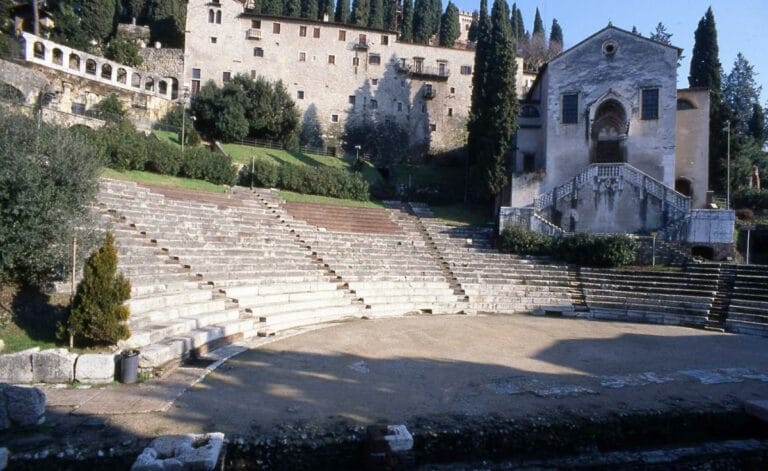Castello di Arzignano: A Medieval Fortress in Italy
Visitor Information
Google Rating: 4.5
Popularity: Low
Google Maps: View on Google Maps
Official Website: visite.castelloarzignano.it
Country: Italy
Civilization: Unclassified
Remains: Military
History
The Castello di Arzignano stands in the municipality of Arzignano, Italy, originally established by local noble counts during the early medieval period. Its origins trace back to between the 10th and 11th centuries, when the first fortress was erected on the San Matteo hill to safeguard the valley from repeated incursions by Hungarian raiders. This early castle, linked to the Maltraversi family and their descendants, played a defensive role but has left no surviving archaeological remains.
In the early 13th century, control of the castle and its lands came under Egano da Arzignano, who is believed to descend from the Maltraversi lineage. Egano, a pro-Imperial Ghibelline, was killed by a relative, and shortly after, in 1266, the local forces from Vicenza destroyed the castle to forestall any further Ghibelline uprisings. Later, during the 14th century, the Scaligeri family—asserting dominion over much of Vicenza’s territory—constructed the present castle structure. Their aim was to protect the Pieve di Santa Maria, the primary church in the region, and to strengthen their regional governance using administrative districts called Capitanati, evolving into Vicariati.
In 1377, the Visconti family took control of Arzignano and established the castle as the seat of their vicariate, continuing its role as a center for local administration. The peaceful transition of power came in 1404, when the Republic of Venice replaced the Visconti without conflict. Venice maintained Arzignano’s vicariate function, though the castle itself was partially demolished by the Visconti in 1436. It was restored within eight years, as evidenced by a commemorative plaque dating the repair to 1444.
While under Venetian rule, the castle’s military purpose diminished. It became the residence of the Vicario, a noble official possessing limited judicial authority, who used the castle’s prominent mastio (or keep) as his official seat until the late 18th century. From the 1800s onward, the property transferred to the church and served as the home of the local parish priest.
One significant event in the castle’s history occurred in 1413, when it endured a siege led by the Hungarian condottiero Pippo Spano. The defenders’ clever tactic of throwing supplies over the walls created the illusion of ample provisions, causing the attackers to abandon the siege after a week, coinciding with the feast day of Saint Agatha. In gratitude, the community vowed to build a church dedicated to the saint. Commemorating this event, the castle’s eastern entrance was named Porta Calavena, and an annual procession continues to honor the defense with offerings and ceremonial gunfire.
Remains
The Castello di Arzignano today preserves a medieval fortress layout that closely matches a detailed 1618 illustration by Girolamo Roccatagliata. This drawing shows a complex with fortified stone walls and as many as fourteen towers encircling a small village or borgo. Built on elevated and steep terrain, the castle is anchored by a mastio, the tallest tower within the Rocca, a term for a strongly fortified refuge. The mastio was connected to the rest of the fortress by a gate and functioned as the official residence of the Vicario during Venetian administration, suggesting it was adapted internally from purely defensive use to habitation.
Access to the castle was controlled through two main gates still identifiable today. The Porta Cisalpina stands as the left entrance, while the right gate is the Porta Calavena, whose name commemorates the 1413 siege by Hungarian forces. Photographic records confirm both gates remain visible from inside and outside the borgo, highlighting their enduring presence as defining features of the fortress.
Within the castle walls lay a cluster of houses forming a small community where local leaders met in a convicinia, or council of family heads, to make decisions affecting the borgo. Nearby stood the Parish Church of Santa Maria, complete with its bell tower, serving as the religious center of the area. Surrounding communal structures accompanied the settlement, while agricultural land was managed by several known local proprietors, including Zanberto della Negra, Giovanni Zampiva, Camillo di Ferrari Cancelliero, Francesco Rudello, Giacomo and Girolamo Balsemini, Pietro Cavina, and Marco Duro.
A restoration of the castle after the Visconti’s partial destruction is confirmed by a plaque dated 1444, found underground and later displayed, marking the Venetian-era renewal of the fortress. Today, the surviving walls, gates, and the mastio retain much of the medieval character depicted in the 17th-century drawing, preserving the overall defensive arrangement and the historic atmosphere of this long-standing stronghold.










